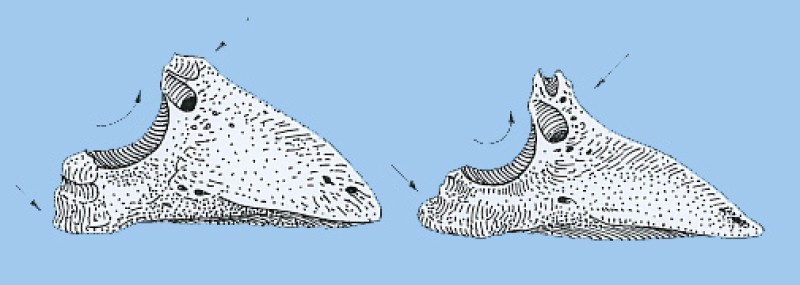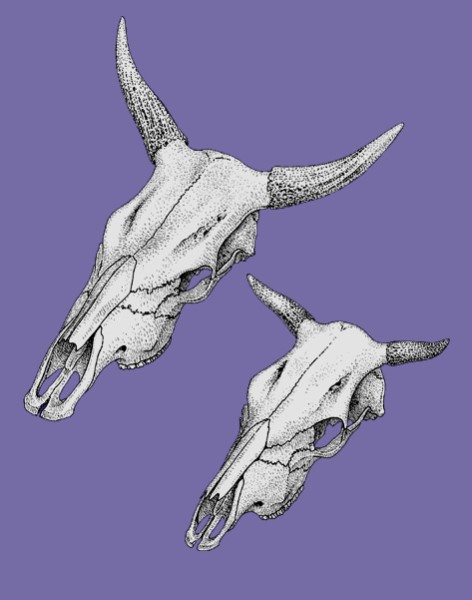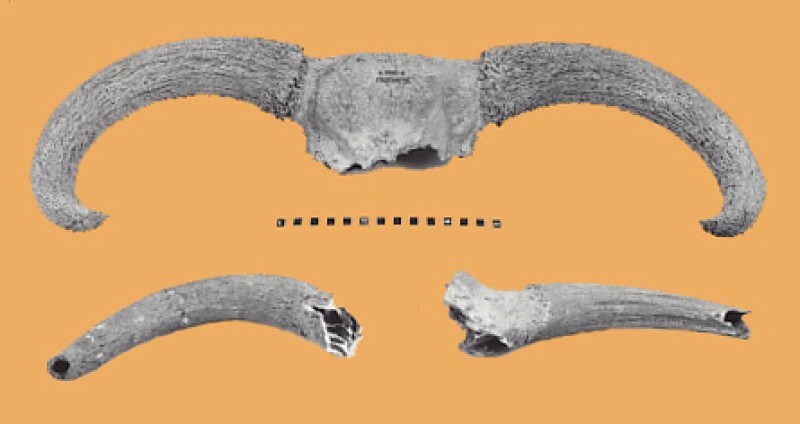The research of prehistoric mining sites in the Eastern Alps has a long tradition. Nevertheless, it is only during the last
decades that Archaeology has exhibited an increasing interest, especially concerning the understanding and interpretation
of their economic background. Analyses that can be applied as a standard have been developed for this purpose at the Archaeological-Zoological
Collection of the Museum for some of the most distinguished mining sites in Austria, namely Dürrnberg (Salzburg) and Hallstatt
(Upper Austria). Numerous faunal assemblages coming mainly from the Bronze Age mining sites have been recently recovered and
delivered for further analysis and research. Some of them demonstrate a considerably large amount of finds and derive from
various sites, such as Brixlegg (Tirol), St. Johann im Pongau (Salzburg), Pichl-Kainisch (Styria) and Prigglitz (Lower Austria).
A big part of the latter has been already studied and published.
As it has been observed a common characteristic of the Bronze Age salt and copper mining sites is the clear prevalence of domesticated pigs.
As it has been observed a common characteristic of the Bronze Age salt and copper mining sites is the clear prevalence of domesticated pigs.
Later on, this will change and during the Iron Age cattle comes to the fore. One major cause for this phenomenon seems to
be the climatic conditions, which were more favorable for alpine pig-keeping during the Late Bronze Age.
In some cases it can be evidenced that the delivery of pigs took place after they had been portioned and appropriately prepared. Their transportation to the mining sites sometimes had to surmount arduous ways and paths. The applied butchery techniques reveal a well-established know-how that was widely spread in the East Alpine area. Especially for Hallstatt the use of salt was a key element for the extensive and systematic processing, transportation, and conservation of the meat. The required economic system behind the animal husbandry that is necessary for such a massive meat production and supply, together with the stable integration of the people involved in mining activities husbandry, and trade indicate an incomparably high level of logistical and practical organisation that causes admiration for the people of a period with no written records.
In some cases it can be evidenced that the delivery of pigs took place after they had been portioned and appropriately prepared. Their transportation to the mining sites sometimes had to surmount arduous ways and paths. The applied butchery techniques reveal a well-established know-how that was widely spread in the East Alpine area. Especially for Hallstatt the use of salt was a key element for the extensive and systematic processing, transportation, and conservation of the meat. The required economic system behind the animal husbandry that is necessary for such a massive meat production and supply, together with the stable integration of the people involved in mining activities husbandry, and trade indicate an incomparably high level of logistical and practical organisation that causes admiration for the people of a period with no written records.
Roseldorf
During an excavation campaign of the Natural History Museum an archaeological site of great importance has been discovered
at Roseldorf-Sandberg. This site dates mainly to the Middle La Tène period and it is thought to be a central settlement of
great significance inhabited by the Celtic Boii. The material derives partly from houses of the settlement and partly from
the Great Sanctuary 1, which definitely exhibits cultic character, and the next equivalent is to be found at the Gallic area.
The analyses of additional faunal deposits from various cultic constructions are in progress or still remain to be processed.
In order to create a basis for comparative studies bone assemblages from the settlement have been already identified and analysed.
Although the results are the one expected for that period, the archaeozoological remains reveal that Roseldorf stands at the
dawn of urbanisation.
The finds from the Great sanctuary consist of mixed human and animal bones. The human sample is constituted by partly smashed femorae and tibiae, whereas the latter by 10000 remains representing mainly disarticulated skeletal elements of complete bodies.
The finds from the Great sanctuary consist of mixed human and animal bones. The human sample is constituted by partly smashed femorae and tibiae, whereas the latter by 10000 remains representing mainly disarticulated skeletal elements of complete bodies.
Skeletons or parts of skeletons have not been recovered. The body part representation indicates the usual slaughter waste;
interestingly enough the lower layers show a prevalence of cattle and horses. These lower layers might be explained as the
waste of feast meals, during which the consumption of cattle and horse was part of the ritual.
Surprisingly enough morphometrical studies illustrated that next to the well-known small-seized La Tène cattle, animals of much bigger size and shape have been recorded. These animals are quite similar to those found later, during the Roman period in Austria, but also similar to those found in Central Italy during the La Tène culture and even earlier. The distribution of this Italic breed may be possibly attributed to contemporary Celtic tribes, who settled Middle and Northern Italy.
During the last years more finds have come to light, which present some differences to the previous material. Together with human remains the archaeologists have uncovered skeletons of horses with in situ partly preserved bridles certainly connected to ritual practices.
Surprisingly enough morphometrical studies illustrated that next to the well-known small-seized La Tène cattle, animals of much bigger size and shape have been recorded. These animals are quite similar to those found later, during the Roman period in Austria, but also similar to those found in Central Italy during the La Tène culture and even earlier. The distribution of this Italic breed may be possibly attributed to contemporary Celtic tribes, who settled Middle and Northern Italy.
During the last years more finds have come to light, which present some differences to the previous material. Together with human remains the archaeologists have uncovered skeletons of horses with in situ partly preserved bridles certainly connected to ritual practices.
Stillfried
In the framework of the research project “Mensch-und Tierdepositionen, Opferkult in Stillfried?” conducted by the Austrian
Academy of Sciences (OREA), deposits of animal skeletons from Stillfried an der March (Lower Austria) have been analysed and
re-evaluated. The remains date to the later Urnfield culture and have been partly thoroughly examined before.
In the meantime new material has arrived, which is the subject of the current research. It is a worldwide unique archaeozoological case that exhibits - more or less - whole or partly preserved skeletons of domesticated and wild species, like wolves, foxes, red deer, hares and roe deer.
In the meantime new material has arrived, which is the subject of the current research. It is a worldwide unique archaeozoological case that exhibits - more or less - whole or partly preserved skeletons of domesticated and wild species, like wolves, foxes, red deer, hares and roe deer.
The lack of slaughtering marks and their deposition in the centre of the site excludes an economical use, but the existence
of many pathological alterations observed at the skeletons in combination with the old age of many individuals point strongly
towards the keeping of the wild animals in a kind of menagerie. The new finds will shed more light to this enigmatic but exciting
case that will contribute to understand the nature and character of the faunal deposits and finally of the site.
Sand
In the 1990s an unknown early medieval Slavic stronghold came to light. It is dated to the middle 10th century and is located
close to a bent of the river Thaya in Lower Austria. The site is found some kilometres away from the well-known castle of
Raabs, from which Austria received the name Rakousko in the Czech language.
The castle Sand experienced a short life time and it was destroyed around 955 AD by the Magyars. The initial examination of the material showed a surprisingly high percentage of wild taxa, indicating that its inhabitants have been intensively hunting wild boar, red deer, and European bison. The high number of findings offered the opportunity to study morphometrical characteristics for some of the most important wild animals of Austria, including European bison.
The castle Sand experienced a short life time and it was destroyed around 955 AD by the Magyars. The initial examination of the material showed a surprisingly high percentage of wild taxa, indicating that its inhabitants have been intensively hunting wild boar, red deer, and European bison. The high number of findings offered the opportunity to study morphometrical characteristics for some of the most important wild animals of Austria, including European bison.
Although there are no indications for another settlement or economic activities in the woodland nearby, the supply with domesticated
species has been also recorded. Indications for the clearance of the region and the economic development came some decades
later with the construction of castle Raabs and not before that.
In order to better understand the internal structure and organisation of this isolated Slavic Castle, the new material will be studied in the framework of a Doctor thesis. The preliminary results have shown that the domesticated animals may be product of raids and not of a well organised society.
In order to better understand the internal structure and organisation of this isolated Slavic Castle, the new material will be studied in the framework of a Doctor thesis. The preliminary results have shown that the domesticated animals may be product of raids and not of a well organised society.

Pedal bone (phalanx 3) of italic cattle (left) and of local cattle. Observe the distinctive shape differences despite the
approximately similar size.

Middle Neolithic cattle from Friebritz: (Left above) horn cores of a bull, (below) calotte of castrated, (right) calotte and
horn cores of female individuals.

Skull of imported italic cow (above) and skull of Germanic cow (below) in the same scale (Drawing: E. Pucher).

Calotte of an aurochs bull from Friebritz with characteristic horn cores (above) and only slightly curved horn cores of female
aurochs from Friebritz (below)

